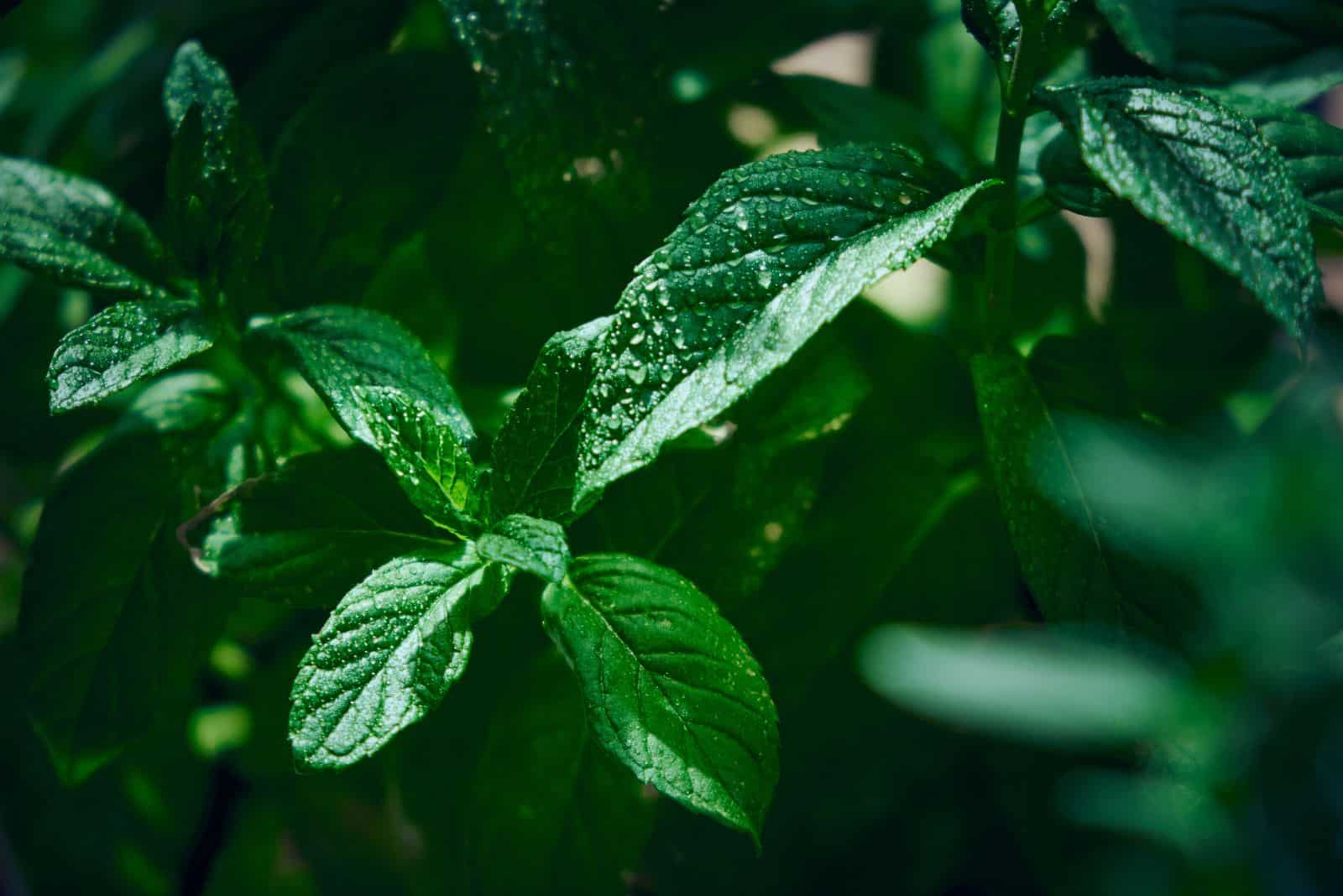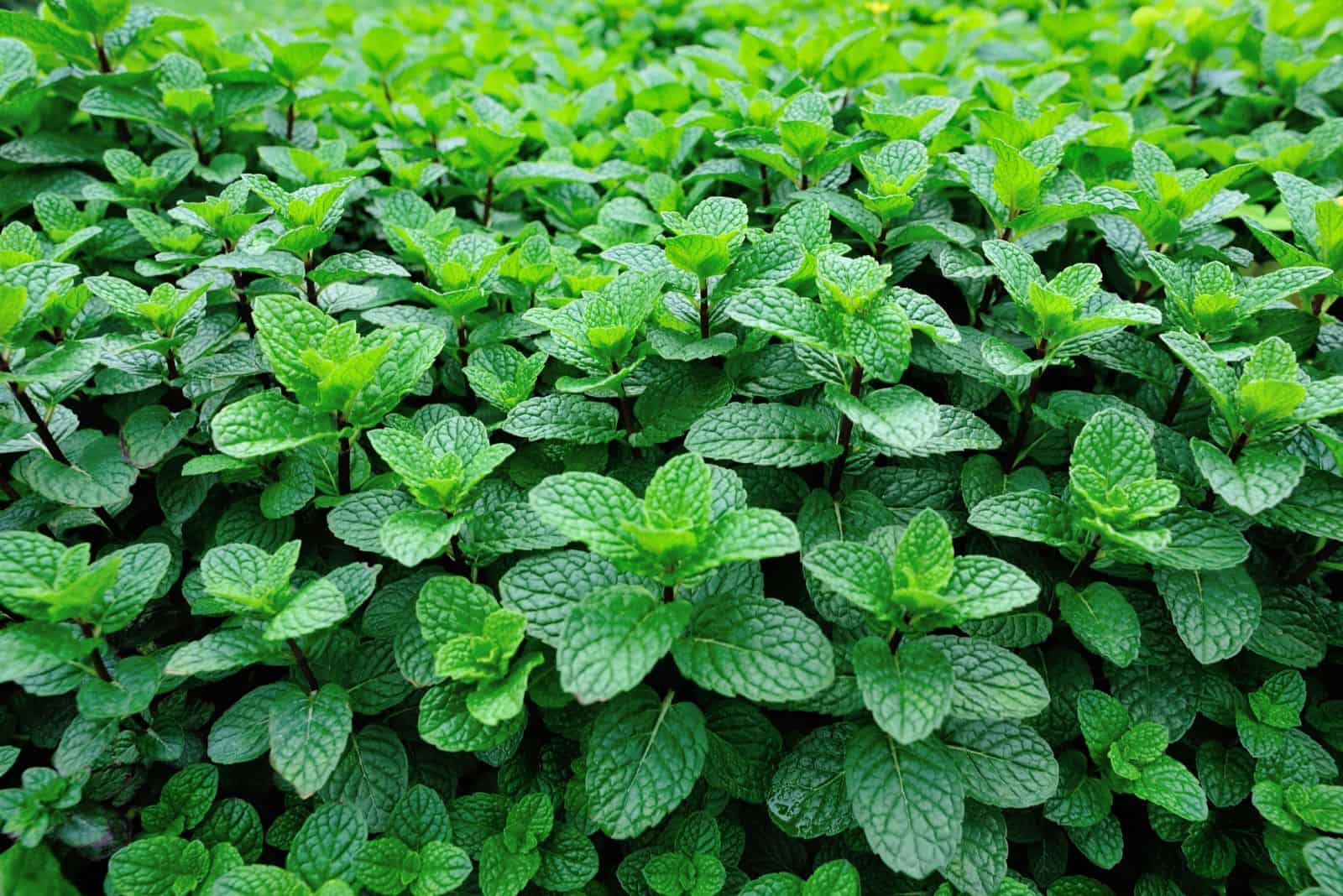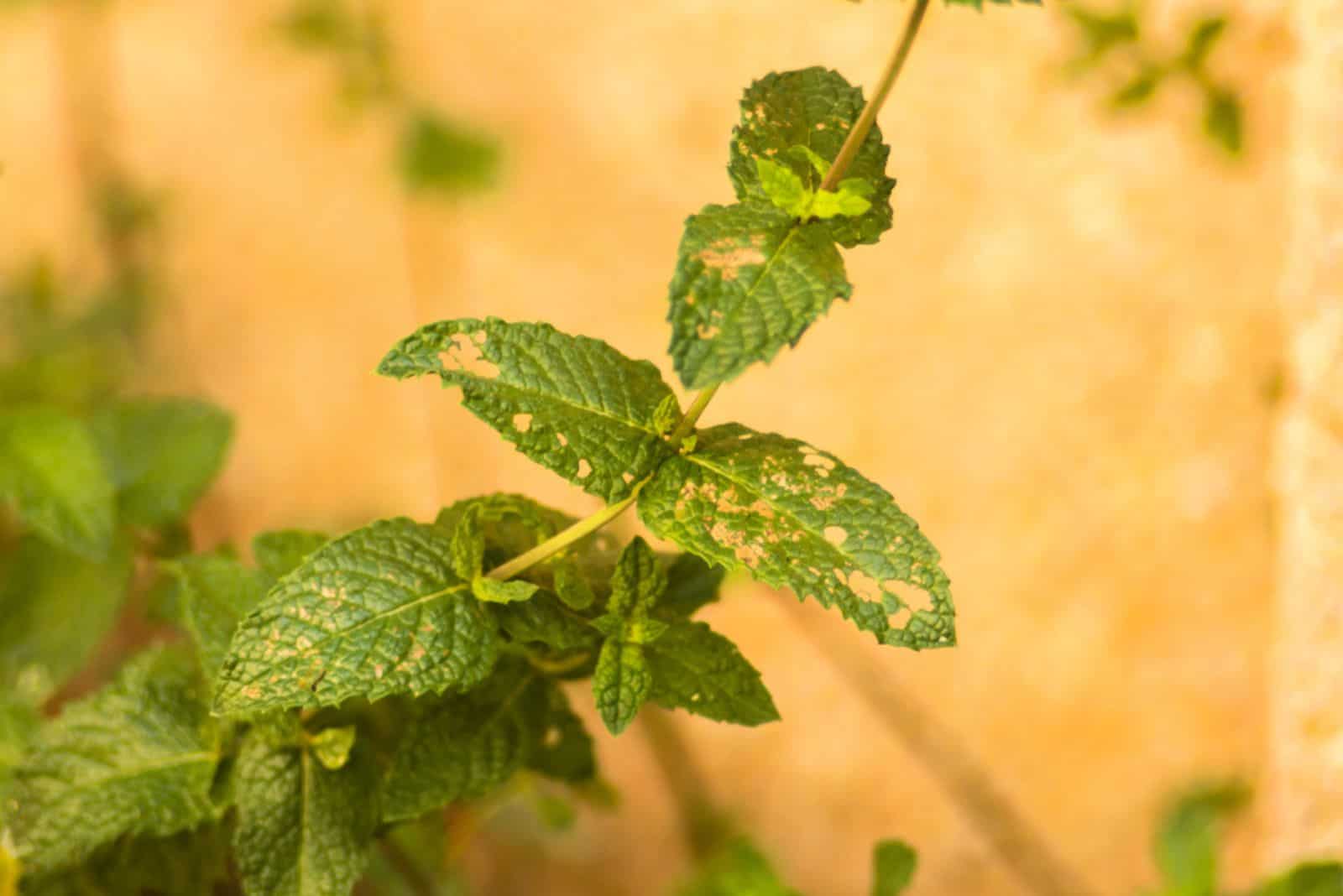The mint plant is definitely on the list of the best and most famous herbs ever! Is it because of its smell or taste? Probably both.
It’s a low-maintenance plant, so you shouldn’t have trouble growing it, but there’s one thing you should pay close attention to: properly watering mint.
If you grow any other plant, you know how tricky watering can be.
For mint plants, the watering schedule depends on several factors. In this article, I’ll tell you more about the factors and some tips for watering these plants.
Let’s get started!
Watering Mint
The most common question I get from growers is: how often should I water mint plants (Mentha spp.)? Unfortunately, there’s no such thing as a fixed watering schedule that will work for mint plants.
However, there are some things that can help you determine the watering needs of your mint.
First, you need to remember that an indoor mint plant needs different watering than an outdoor mint plant.
Let’s start with watering mint plant seedlings.
Watering Mint Seedlings
Seedling development is one of the stages of the plant-growing process.
Your mint seedlings need water and nutrients to develop further.
You’ll need to water your mint plant almost every day until it is established.
If your seedlings are close to each other, moisture will evaporate faster, so the plant will need more water.
Your goal is to keep the mint soil moist but never waterlogged. Remember that the roots aren’t strong yet and may quickly rot if they sit in water.
On the other hand, don’t wait too long between waterings as mint seedlings could wilt due to lack of water.
Check the seedlings every day and inspect the moisture level in the soil.
Watering An Established Mint Indoors
If your mint is already established and you keep it indoors, its watering needs won’t be high.
This is mainly due to the fact that an indoor mint plant isn’t exposed to the direct sun very much. As a result, water evaporates slower, so the soil stays moist for longer.
Bear in mind that indoor mint is very sensitive to overwatering, so you should be very careful to prevent water accumulation.
Too much water will result in overly moist soil, and the most common consequence of this is root rot, which can kill your plant!
Watering An Established Mint Plant Outdoors
Mint plants are successfully grown both indoors and outdoors, but the watering needs of mint grown outdoors differ from those of indoor plants.
Furthermore, there’s a difference in the watering needs of outdoor potted mint plants and those planted directly in the soil.
Let’s learn more!
Watering Potted Mint Plants
If you grow your mint in a pot and keep it outdoors, remember that its watering needs will increase.
This is because potted mint plants receive more direct sunlight outdoors, which enhances water evaporation from the soil.
Never let mint soil dry out entirely because it can wilt, and your fresh mint won’t look fresh anymore!
Other factors, such as weather and the amount of rainfall, should also be considered. For example, your mint plant won’t need much water if there is frequent rainfall, and vice versa.
Again, your goal is to keep the mint soil moist but prevent excess water accumulation.
Watering Mint Planted In The Ground
If your mint is planted directly in the ground, it won’t need a lot of water. You’ll need to water it 2-3 times per week.
However, you need to consider the temperatures and the rainfall frequency in your area.
If you live in a region with frequent rainfall, there’s no need to water your mint every few days. Your mint will grow perfectly in moist soil.
On the other hand, if you live in a dry area you need to check soil moisture content daily and water more frequently.
Ideal Type of Water And The Best Way To Water Mint Plant
For mint plants grown outdoors, the best tool you can use is a soaker hose.
You should never water mint leaves as it increases their susceptibility to mint rust. This is the most common fungal disease that affects these plants.
So, you should aim to water the soil only.
Of course, you can’t use a soaker hose for watering an indoor mint plant. A good old watering can is the best thing to use for indoor plants.
I recommend using gooseneck watering cans because you can control the water flow and avoid watering mint leaves.
Indoor mint can also suffer from mint rust, so always keep them dry. Rainwater is a great choice for plants – collect it and water your indoor mint with it if you can.
Factors That Affect The Mint Watering Schedule
The amount of water required and the watering schedule for this herb depends on several factors.
Below you’ll find all you need to consider before creating a watering schedule for your mint.
Season
During the hot summer months, especially in periods of drought, your mint will need a lot of water. Water will evaporate faster due to high temperatures, and you don’t want to leave the roots without water for too long.
Your mint is fully established in the fall when temperatures are lower and the root system is stronger, so the watering needs significantly decrease. Remember that mint plants can flower if the temperatures are too high.
Light Conditions
Light is one of the essential factors to consider when growing mint. You’ll only get healthy plants if you ensure enough water and light.
A combination of full sun and moist soil will give you the healthiest mint. Your Mojito and cup of mint tea will taste like never before!
If your mint receives full sun during the hot summer months, it will need frequent watering. You don’t need to water it that often if it grows in partial shade.
Plant Spacing
Strawberry mint, chocolate mint, apple mint, and peppermint prefer spacing from 12 to 24 inches.
The closer you plant your mint, the more water it will need.
The best way to explain this is that two mint plants will fight for water and nutrients in the soil, and use up all the water pretty fast.
Overwatered vs Underwatered Mint Plant
If you have houseplants, you already know that overwatering isn’t uncommon. For mint, it’s the same thing.
So, if you have ever wondered if it’s possible to overwater mint, the answer is YES. It does need more water than other common plants, but won’t take too much water in the soil very well.
I mentioned that this herb has high watering needs, so the fact that it quickly becomes underwatered shouldn’t surprise you.
Let’s look at some signs of overwatering and underwatering in mint plants, and how to fix the issue.
Overwatered Mint
Let’s first cover the signs of overwatered mint and how to fix this issue.
Drooping And Wilting
If your plant is overwatered, the first thing you’ll notice is that it starts to wilt or droop. In essence, the plant appears to be weak and its leaves look ready to fall off.
There are several causes of wilting, but overwatering is the culprit in most cases.
Look for other signs of overwatering before you start fixing the issue.
Leaf Discoloration
Wilting mint will also display yellow or brown leaves. If you notice leaf discoloration, act immediately as your mint could soon die.
I recommend removing the discolored mint leaves.
Root Damage
Root rot is the most common consequence of too much water in the soil. You should check the root system if your mint is growing slower than usual.
When all the roots stop functioning, the mint plant as a whole swiftly perishes as well because the decaying roots can no longer assist the plant in obtaining water and food.
As well as root rot, your mint can suffer from stem rot if its roots sit in water for too long.
The Soil Doesn’t Dry And Has Mold On The Top
After you water your mint, the soil will start drying as the roots uptake the water. If the soil is still wet after a few days, something is going on below the soil surface.
If you wait longer, you’ll notice mold on the soil surface, which is a tell-tale sign of overwatered mint.
If your mint has root rot and mold has developed on the soil surface, the best idea would be to repot/replant it.
If you are growing mint in pots, make sure there are drainage holes in the bottom of the pot.
Ensure well-draining soil for both potted and in-ground mint.
Underwatered Mint
Dehydrated mint will have crispy and dry leaves that will typically turn brown. Another common sign is a weak stem.
Although overwatering is the cause of wilting, underwatered mint will also have this problem.
The good news is that underwatering is considerably simpler to fix than overwatering.
The solution to underwatering is more frequent watering and bottom watering. If you grow your mint in a pot, fill a larger container with water and put the pot with your mint in it.
This way, the roots of your mint will gradually absorb water until the plant is fully hydrated.
One of the best ways to avoid underwatering is by putting a layer of mulch over the topsoil. It will keep the soil moist and warm enough for your mint to thrive and be perfect for harvest.
Wrapping Up
If you plan to grow a mint plant, I must tell you that it’s the best idea ever!
You can choose to grow them in pots or in-ground. All you need to do is ensure adequate drainage by choosing the right potting mix for your mint and, of course, give the plant a lot of light.
Now that you know everything about watering mint, I’m sure it will thrive and you’ll be drinking an incredible mojito or cup of tea before you know it!
Until next time!
Like this post? Share or pin it for later!






